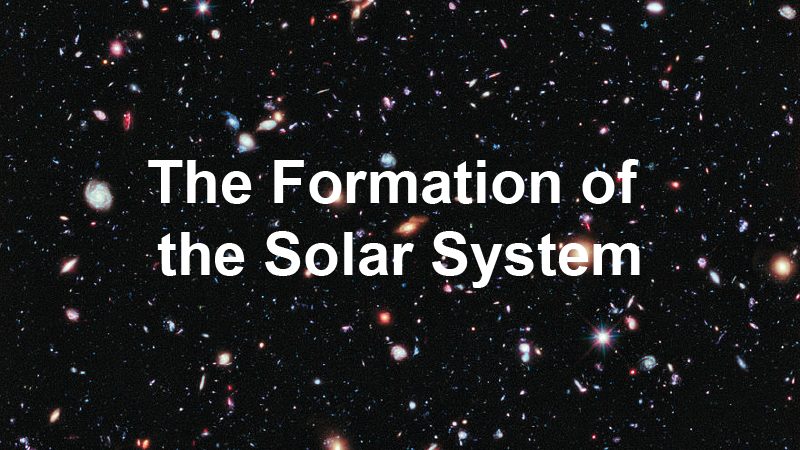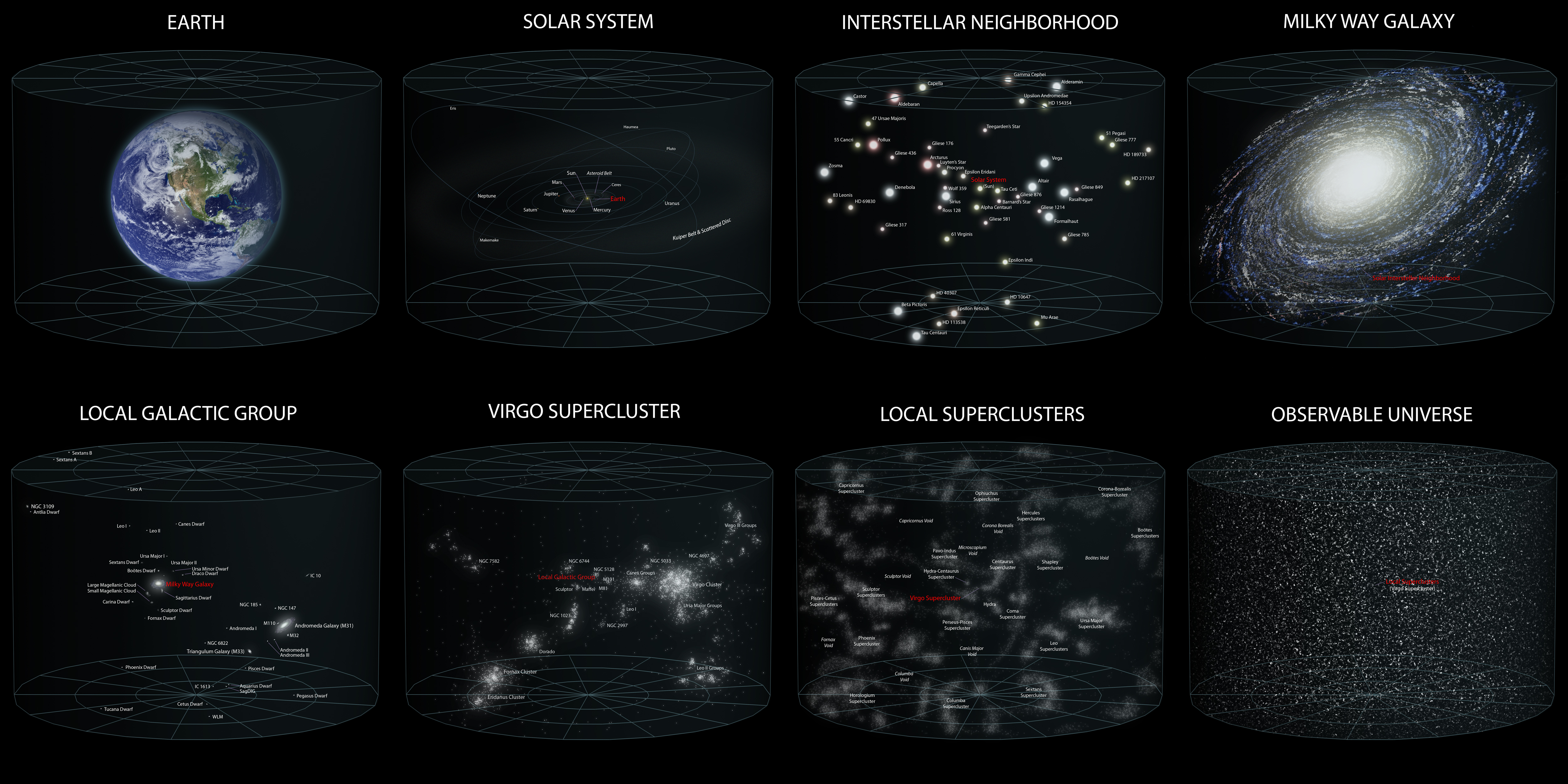The Formation of the Solar System
Episode #9 of the course A short history of the universe
Our solar system. A lot of people think they know its story, since most of us learned as children about how our sun and its eight planets (plus Pluto) formed out of a disk of spinning gas and dust. However, the true story that scientists have been discovering recently is much stranger and more complex.
This new understanding of the solar system had its roots in the discovery of Pluto. When Clyde Tombaugh, an uneducated farm-boy, went looking for Pluto with the telescopes at the Lowell observatory in 1930, he thought he was looking for a much larger planet—the mysterious “Planet 9” that would explain irregularities in the orbit of Neptune. What he found instead was Pluto, the first of many icy “dwarf planets” which, other than Pluto, have all been discovered since 2005, orbiting our sun far out beyond the orbit of Neptune.
Our solar system was born about five billion years ago from a cloud of gas and dust left behind by earlier generations of stars that died and exploded. This cloud was made mostly of hydrogen, some helium, and very small amounts of heavier elements created by nuclear fusion in the cores of those earlier stars.
Our sun and all of the other planets, asteroids, and comets in our solar system were formed by gravity, which gradually pulled together the dust and gas in the original cloud over millions of years. As the material gathered toward the center of the cloud, it began to spin faster and faster, like an ice-skater pulling in their arms, and this spinning caused the cloud to become a disk with the baby sun at the center and other spinning lumps orbiting around it. These became the planets and other rocks in our solar system.
Until a few years ago, astronomers assumed that the planets and comets formed in the places where they are now and stayed there, but now some astronomers believe more interesting things happened. During the first few million years of their lives, the planets and sun were pulling material from the far edges of our solar system toward the middle. And every time a planet’s gravity sent a rock inwards toward the sun, that planet got a kick of energy outward, away from the sun. So, some of the planets—especially the four gas giants (Jupiter, Saturn, Uranus, and Neptune)—used to be closer to the sun but later migrated out to their current orbits.
At the same time, a number of violent collisions between planets and other bodies created the asteroid belt between Mars and Jupiter and changed the orbits of other planets. Uranus, which spins on its side relative to the other planets, seems to have taken a huge hit!
For years, astronomers have been expecting to discover one or more large planets out beyond Neptune, because there does not appear to be enough mass in the solar system we can see to account for the way it spins. Now we know that Pluto is just one of thousands of icy rocks orbiting in a doughnut-shaped swarm called the Kuiper Belt around the outer solar system. And even further out there is the Oort cloud, where many comets come from. But that still doesn’t account for the missing mass. Astronomer Michael Brown, who discovered Eris, one of many “dwarf planets” like Pluto, calculates that there should be more planets at least as big as Mars out there. But they are too far away to see with our telescopes today.
Recommended book
“Wonders of the Solar System” by Brian Cox, Andrew Cohen
Share with friends


